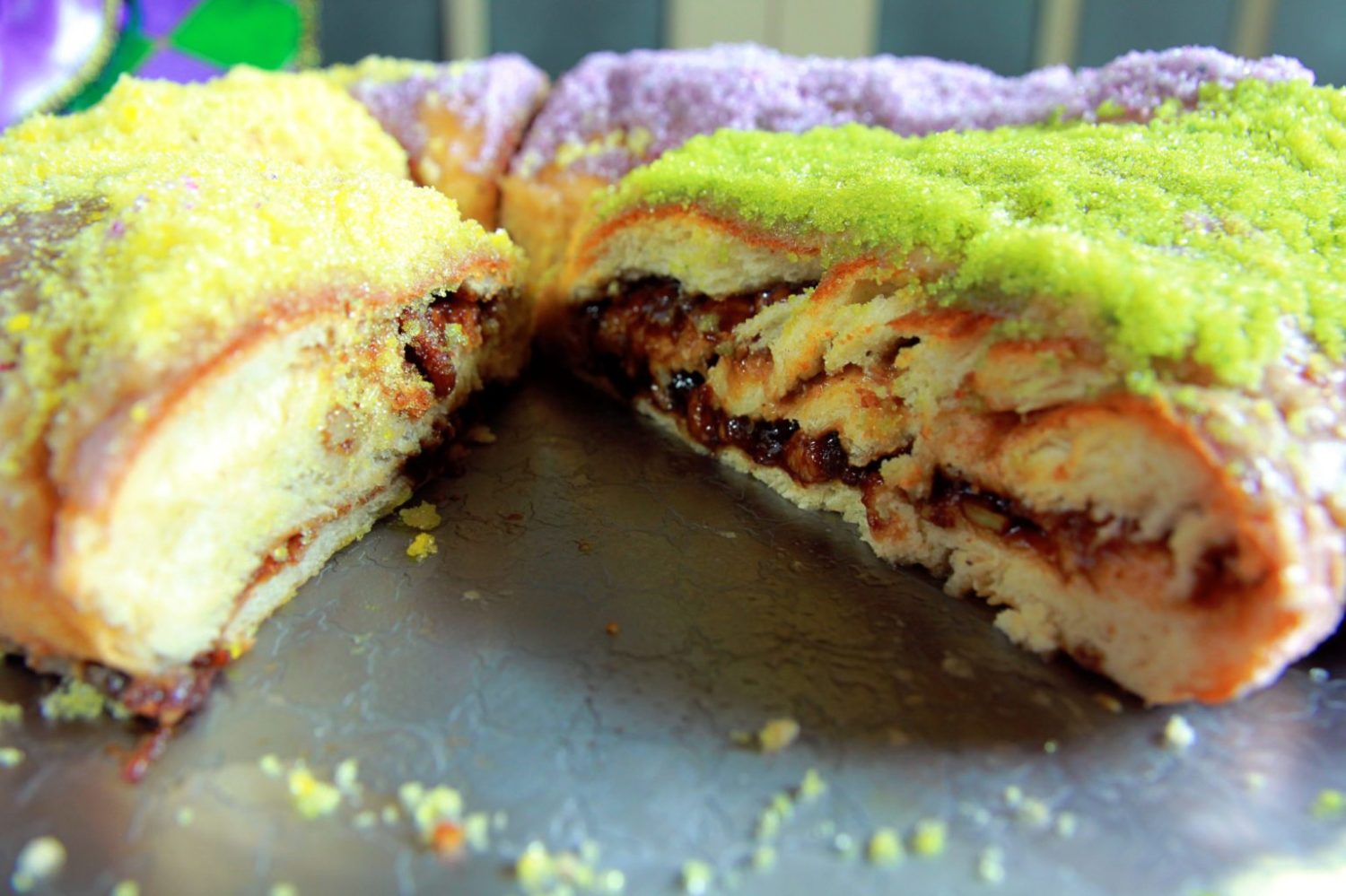When you think of Mardi Gras, you likely envision colorful beads, elaborate masks, riotous parades and general revelry. But how much do you know about the traditional foods of Mardi Gras—specifically, the King Cake?
The History Of Mardi Gras
Mardi Gras—also known as Fat Tuesday—is the day before Ash Wednesday, a day in which Catholics and other Christians are meant to have one last day of revelry before fasting for Lent. Fat Tuesday also marks the last day of what is considered to be Mardi Gras season. The season is filled with Carnival celebrations that last from the Epiphany all the way through to Ash Wednesday.
Rooted in medieval history, Mardi Gras is celebrated all over the world by people of all different cultures and faiths, although it may go by different names. For instance, in the United Kingdom and Ireland, the celebration is called “Shrovetide” and it ends on Shrove Tuesday. (The word “shrove” is derived from the verb “to shrive,” or to hear confessions, as this is a time when Catholics confess their sins.)
In addition to parades and other forms of celebration, people who celebrate Mardi Gras also enjoy rich and delicious foods, such as pancakes. And here in America—particularly in New Orleans—the most traditional Carnival food is King Cake.
What Is King Cake?
The King Cake tradition is said to have been brought over to New Orleans from France in 1870. Although it’s called a cake, the sweet treat is really more of a cross between a pastry and a coffee cake. It’s made of brioche dough, and has fillings such as chocolate, cream cheese or cinnamon.
The cake comes in three colors—purple, green and gold—and each of these colors represents a different virtue: purple for justice, green for faith and gold for power. Beyond these traditional colors, hidden inside each cake is a plastic baby. That’s right: a baby. Check out this tiny baby popping out of Instagram user @whoisvm’s cake:
Or this other one just chillin’ alongside Instagram user @lackadazy’s cake:
The baby is meant to represent the baby Jesus. However, the tradition of the hidden “cake baby” actually has pagan roots. Early Romans who celebrated Saturnalia, a winter solstice celebration in honor of the god Saturn, believed fava beans to have magical properties. These fava beans were highly prized among the Romans, and they even used them for voting purposes. During Saturnalia, a fava bean would be baked inside of a galette (a flat, round pastry), and whoever received the piece with the bean would be “King” for the day.
The same is true for the person who receives the baby in the King Cake. Except that person who finds the cake baby is also responsible for providing the King Cake on the next Mardi Gras.
Did you find the baby last year? If so, impress your family and friends with this this delicious recipe for King Cake from Plant Milk Mama:

Or try this recipe here on Mommy’s Kitchen. Happy Fat Tuesday!
This story originally appeared on Simplemost. Checkout Simplemost for other great tips and ideas to make the most out of life.

